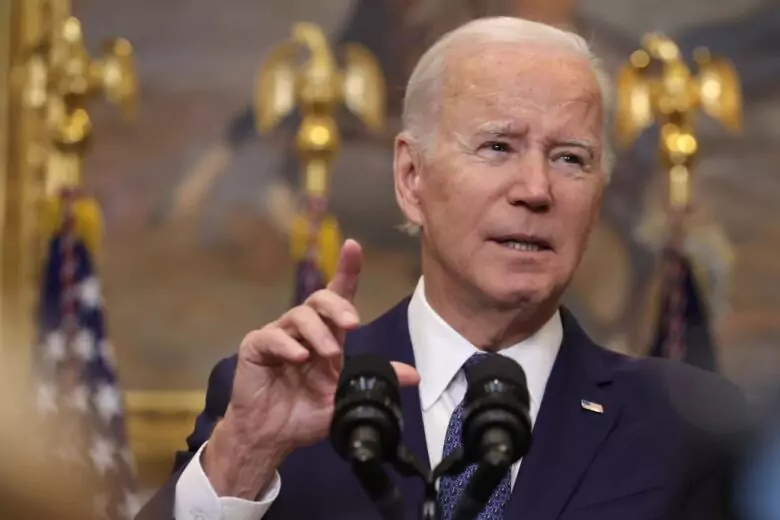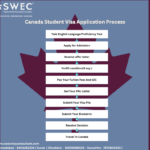
Canada and the U.S. have announced they have agreed to reform the Safe Third Country Agreement. U.S. President Joe Biden is in Ottawa today on an official visit.Biden arrived in Canada’s capital city last night for a two-day trip.
Canada’s Prime Minister Justin Trudeau and President Biden are spending time together discussing common interests such as trade, immigration, the Russia-Ukraine war, and the situation in Haiti.
It is the first official visit by a U.S. president since Barack Obama in 2016. Former president Donald Trump never came to Canada for an official visit during his 2017-2021 term. This is Biden’s first official state visit to Canada since he was elected two years ago.
Safe Third Country Agreement
The two leaders have agreed to reform the Safe Third Country Agreement during their time together. The new terms mean the Agreement will apply to the entire Canada-U.S. border, including at all designated and undesignated ports of entry.
Under the Agreement, refugee claimants are required to request refugee protection in the first safe country they arrive in, unless they qualify for an exception to the Agreement.
The agreement applies to claimants who arrive:
- at Canada-U.S. land border crossings
- by train or
- at airports, only if the person seeking refugee protection in Canada has been refused refugee status in the U.S. and is in transit through Canada after being deported from the U.S.
However, it did not apply to unofficial land crossings, such as the widely known Roxham Road which saw over 39,000 unofficial land crossings from the U.S. to Canada in 2022. This will change as of 12:01 AM Eastern Time tonight.
This means that Canada will have the ability to turn away asylum claimants who try to enter the country from undesignated ports of entry. Canada has also agreed to welcome 15,000 migrants on a humanitarian basis from the Western Hemisphere over the coming year.
Common interests
The United States and Canada share a close relationship both geographically and economically. The Canada-U.S. border is the longest land border in the world, at 9,000 km, and the U.S. is Canada’s only neighbor.
Part of this proximity means that the U.S. is also Canada’s largest trading partner. The two countries shared over $1 trillion in bilateral trade in goods and services in 2021.
Alongside Mexico, they also participate in the Canada-United-States-Mexico Agreement (CUSMA), one of the largest free trade regions in the world. This agreement aims to generate economic growth and promote a high standard of living for people in each country.
Under CUSMA, working professionals in any of 63 occupations may be eligible to work in another country under the Agreement. CUSMA participants do not require a Labour Market Impact Assessment (LMIA) to obtain their work permit. An LMIA is a document submitted to Employment and Social Development Canada that proves that hiring a foreign national will not have a negative impact on Canada’s economy or workforce.
Employment in Canada must be pre-arranged in an occupation that matches the candidate’s qualifications. Self-employed professionals are not eligible.
Canada and U.S. immigration policies
Canada and the United States are both popular destinations for new immigrants. Since the last state visit in 2016, Canada’s population has grown from 36 million people to 39 million people and immigration is responsible for over a third of this growth, or 1.3 million people.
Canada’s 2021 census shows that almost a quarter of Canada’s current population is an immigrant. Canada aims to increase the number of immigrants and welcome over 500,000 new permanent residents by 2025.
Discover if You Are Eligible for Canadian Immigration
Canada PR Point Calculator – Free Assessment
Data from the Migration Policy Institute (MPI) shows that in 2021 there were 45.3 million immigrants living in the United States, or just over 13% of the total population of 339 million. This shows a growth of less than 1% in immigration between 2019 and 2021.
United States immigration policy places more emphasis on family reunification. Among the 740,000 immigrants who became legal permanent residents of the U.S. in the 2021 fiscal year, 61% (451,086) arrived in the U.S. under a family sponsorship program. A further 26% (193,338) were economic immigrants and the remaining 13% (95,578) were classified as humanitarian/other.
In contrast, Canada welcomed 252,975 economic (skilled) immigrants, 80,990 family class, and over 70,000 under refugee, humanitarian, and other categories in 2021. Over half (748,120) of recent immigrants living in Canada, who arrived between 2016 and 2021, were admitted under the economic category.
Canada is currently facing a shortage of skilled labor and relies on skilled immigrants to fill chronic gaps in the workforce. Immigration is responsible for almost 100% of Canada’s labor force growth and 75% of its population growth.
Notably, the U.S. is one of the top ten source countries of immigrants to Canada. Statistics Canada says United States immigrants accounted for 10,400 (2.3%) new permanent residents in Canada in 2022.
The Prime Minister’s Office estimates that pre-pandemic, approximately 400,000 people crossed the Canada-United States border every day and that around 800,000 Canadian citizens lived in the United States in 2021.




